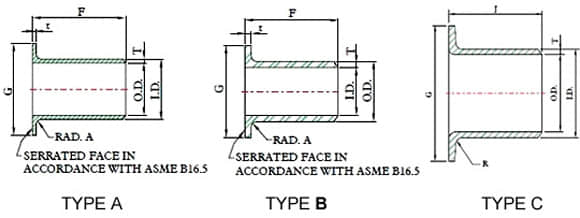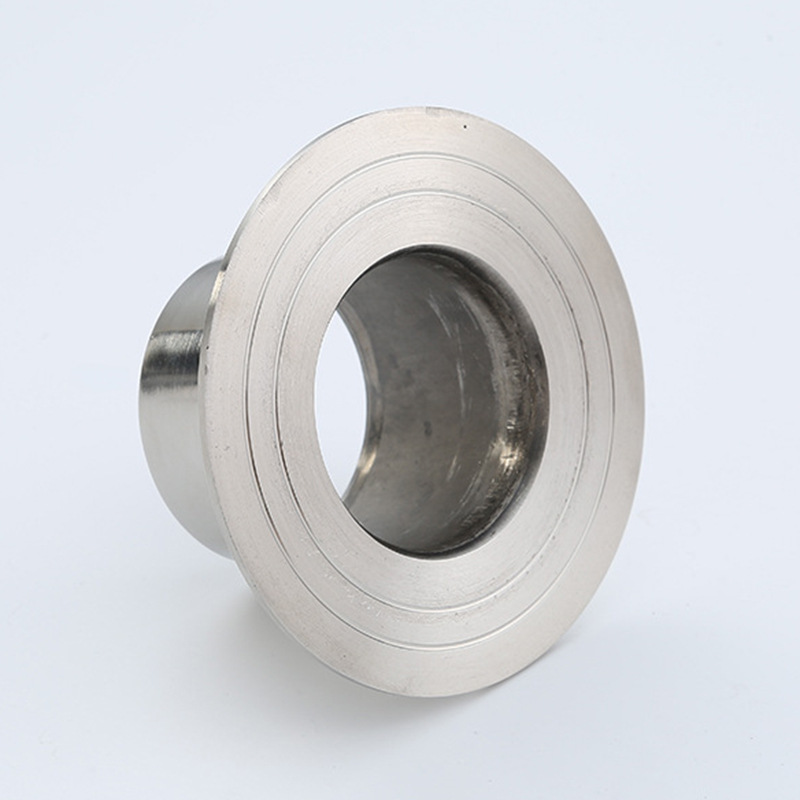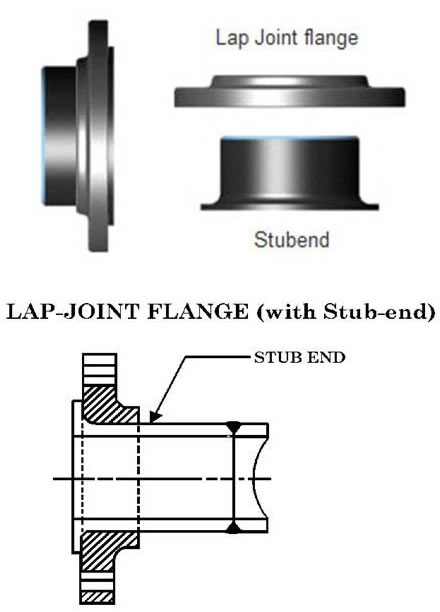Telp : +86-18059296519
Whatsapp : +8618059296519
Surel : [email protected]
Ujung rintisan adalah jenis sambungan pipa yang digunakan dalam berbagai aplikasi industri untuk menyambung pipa atau flensa.
Ini dirancang untuk dilas ke pipa atau flensa sambungan pangkuan, sehingga menghasilkan sambungan yang aman dan anti bocor. Ujung rintisan itu sendiri tidak memiliki ulir apa pun; sebaliknya, ia bertindak sebagai selongsong yang tergelincir di atas pipa atau flensa sambungan pangkuan. Desain unik ini memungkinkan pembongkaran sambungan dengan mudah dan cepat bila diperlukan.
Ukuran :
DN15-DN1400Standar :
ASME B16.9, MSS SP-43, EN1092-1 TYPE35/ JIS B2313, B/T 12459, GB/T13401, SH3408/SH3409,HG/T21635,HG/T21631Bahan :
Nickel Alloy, Duplex Steel, Stainless SteelKerah
Ujung rintisan merupakan komponen penting yang digunakan dalam berbagai aplikasi industri, khususnya dalam sistem perpipaan.
Persiapan Sederhana: Mereka tidak memerlukan potongan wajah yang rata atau paralel sempurna.
Pemasangan Logam Serbaguna: Mereka dapat menggabungkan logam yang berbeda, seperti aluminium dan tembaga.
Kemampuan Beradaptasi Ketebalan: Mereka mengakomodasi ketebalan yang bervariasi, dengan potongan yang lebih tipis dilas di atasnya, memungkinkan koneksi bahkan dengan diafragma dan foil.

Ujung rintisan diproduksi dalam tiga tipe berbeda dan dua panjang standar.
Ketik “A”: jenis ini diproduksi dan dikerjakan agar sesuai dengan flensa sambungan pangkuan. Permukaan perkawinan ujung rintisan dan flensa sambungan pangkuan memiliki profil dan permukaan yang serasi. Tebal putaran ujung stub tipe A > = tebal dinding minimum pipa yang disambung. Bagian luar ujung rintisan dan flensa sambungan pangkuan memiliki profil dan permukaan yang serasi. Tebal putaran ujung stub tipe A > = tebal dinding minimum pipa yang disambung. Sudut luar tipe A mempunyai jari-jari untuk menampung flensa sambungan pangkuan, sedangkan sudut dalam berbentuk persegi.
Ketik “B”: jenis ujung rintisan ini cocok untuk flensa slip-on standar yang berfungsi sebagai flensa sambungan pangkuan. Ketebalan putaran ujung stub tipe B adalah >= WT minimum pipa penghubung. Pangkuan ujung rintisan jenis ini umumnya memiliki permukaan bergerigi. Untuk memastikan sambungan yang rapat, diperlukan chamfer pada sisi ID flensa.
Ketik “C”: tipe terakhir ini dapat digunakan baik dengan sambungan pangkuan maupun flensa penahan slip-on dan dibuat dari pipa. Putaran ujung stub tipe C melebar dan ketebalan putaran adalah 75% dari WT pipa penghubung. Tipe C memiliki radius luar fillet pendek yang mampu menampung flensa cadangan apa pun.
Ketik “CS”: tipe ini mirip dengan “C” dengan perbedaan pada permukaan pangkuannya terdapat gerigi konsentris yang dikerjakan selama proses pembuatan.
| Standar | Spesifikasi |
|---|---|
| ASTM A234 | Spesifikasi Standar Perlengkapan Perpipaan dari Baja Karbon Tempa dan Baja Paduan untuk Pelayanan Suhu Sedang dan Tinggi |
| ASTM A420 | Spesifikasi Standar Perlengkapan Perpipaan dari Baja Karbon Tempa dan Baja Paduan untuk Layanan Suhu Rendah |
| ASTM A234 WPB | ASTM A234 adalah Spesifikasi Standar untuk alat kelengkapan pipa baja termasuk bahan baja karbon dan paduan untuk layanan suhu sedang dan tinggi. WPB adalah salah satu grade baja dalam standar ini |
| ASME B16.9 | Standar ASME B16.9 mencakup dimensi keseluruhan, toleransi, peringkat, pengujian, dan penandaan untuk alat kelengkapan las buttwelding tempa buatan pabrik dalam ukuran NPS 1⁄2 hingga NPS 48 (DN 15 hingga DN 1200). |
| ASME B16.28 | Standar ASME B16.28 mencakup peringkat, dimensi keseluruhan, pengujian, toleransi, dan penandaan untuk siku dan pengembalian baja karbon tempa dan baja paduan buttwelding radius pendek. |
| MSS SP-97 | Praktik Standar MSS SP-97 mencakup dimensi penting, penyelesaian akhir, toleransi, pengujian, penandaan, material, dan persyaratan kekuatan minimum untuk perlengkapan outlet cabang tempa yang diperkuat secara integral 90 derajat untuk pengelasan buttwelding, pengelasan soket, dan jenis berulir. |
| ASTM A403 | Spesifikasi Standar untuk Perlengkapan Pipa Stainless Steel Austenitik Tempa. |

Manfaat
Umumnya, flensa sambungan pangkuan memiliki kualitas yang lebih rendah dibandingkan material ujung rintisan dan pipa, sehingga menghemat berat total material bermutu tinggi yang digunakan untuk sambungan flensa.
Konsep Flange yang “longgar” pada Lap Joint, sangat bermanfaat selama pemasangan sistem perpipaan di lapangan. Jika dua spool akan dikawinkan di lapangan, memiliki satu Flange yang dapat diputar sangat menguntungkan ketika menyelaraskan lubang baut, sebelum memasukkan baut Stub dan mur yang menyertainya. Fasilitas yang memudahkan orientasi dan penyelarasan lubang baut, khususnya kegunaannya adalah terdapat spool yang harus sering dilepas, jika isolasi positif merupakan persyaratan proses.
Mengapa menggunakan Stub Berakhir?
Penggunaan ujung tiang dan flensa sambungan pangkuan memberikan metode alternatif untuk membuat sambungan flensa, berbeda dengan flensa leher las.
Komponen yang terlibat adalah:
Akhir Rintisan: Ini mirip dengan segmen pipa, dengan salah satu ujungnya melebar ke luar dan ujung lainnya disiapkan untuk pengelasan ke pipa dengan ukuran lubang yang sama (NPS = ukuran pipa nominal), material, dan ketebalan dinding. Mesin pembakaran biasanya digunakan untuk membentuk ujung pipa dan kemudian memotongnya sesuai panjang yang diinginkan.
Flensa Sambungan Putaran: Jenis flensa ini memudahkan menyatukan kedua segmen pipa, sehingga menciptakan sambungan yang aman.
Pendekatan ini menawarkan fleksibilitas dan kemudahan perakitan, menjadikannya alternatif berharga dibandingkan flensa leher las tradisional.
